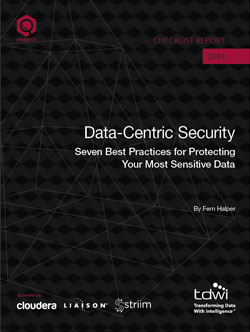
TDWI Checklist Report | Data-Centric Security: Seven Best Practices for Protecting Your Most Sensitive Data
November 7, 2016
As your organization incorporates newer data strategies, it also needs to consider data protection and data-centric security, which is security that operates on the data or very close to it. This includes data, files, documents, and folders stored and used. Data-centric security is particularly important for sensitive company data, including personal, financial, and medical information.
The reality is that many organizations don’t classify data or know where sensitive data lives, much less how to protect it. Others have a false sense of security. For example, in a recent TDWI survey on data-centric security, 77% of respondents were confident about the data security at their organization, yet far fewer (approximately 40%) felt that other companies’ data is secure. This suggests a certain naiveté among data professionals when it comes to security.
This Checklist Report defines data security and data-centric security and discusses best practices and enabling technology functions to help make data more secure, including encryption, tokenization, and real-time technologies. It also covers deploying traditional security best practices.